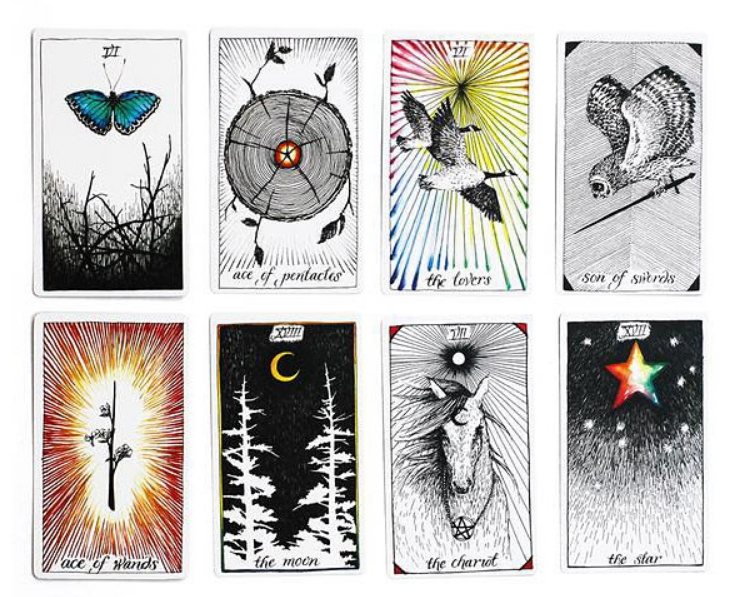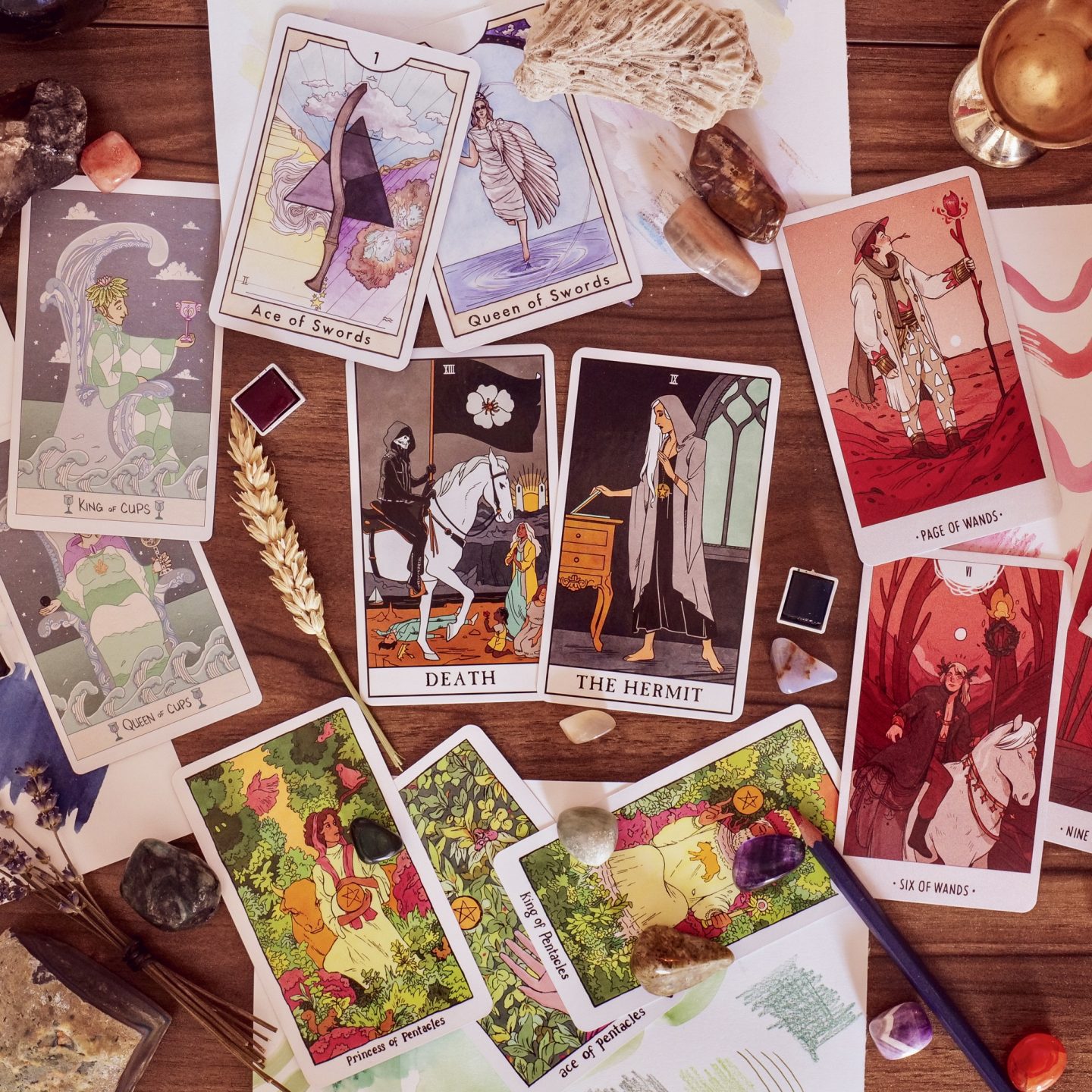So, I got this itch, you know? I’ve seen a ton of tarot decks, all vibrant and colorful, which is great, but I started wondering about something different. Something starker. That’s how the whole black and white tarot card idea kicked off in my head. I figured, hey, less color, less fuss, right? Boy, was I in for a surprise.

Getting My Hands Dirty
First thing I did was grab some decent paper – not too textured, not too smooth – and my trusty set of drawing pens. I’ve got a mix, from fine liners for the tiny details to some thicker ones for bold outlines. I thought, “This’ll be straightforward. Just draw the usual symbols, but, you know, without the color.” That was my first mistake. Things looked flat, kinda boring, actually. The magic just wasn’t there.
I realized pretty quick that black and white isn’t just about removing color. It’s about using the black and the white, the light and the shadow, to do all the talking. This meant I had to really think about composition and contrast in a way I hadn’t quite focused on before with these specific images.
The Real Grind: Rethinking Symbolism
I started with the Major Arcana, ’cause, well, they’re the big guys. Take The Fool, for example. Usually, you’ve got bright yellows, a sense of airy lightness. How do you get that across with just black ink? I must have sketched that card a dozen times. One version looked too grim, another too empty. It was all about finding the right balance of linework and solid black areas to guide the eye and hint at the meaning.
Then came cards like The Moon. You’d think black and white would be a natural fit – all shadowy and mysterious. But getting the right kind of shadows, the kind that felt mystical rather than just messy, that took some doing. I spent a lot of time just staring at the page, then adding a line, then another, sometimes erasing more than I drew if I was using pencil first.
- Contrast became key: I really had to push the darks and make the whites pop. It wasn’t just outlining; it was sculpting with ink.
- Negative space was a game changer: What you don’t draw becomes just as important as what you do. Leaving areas blank to suggest light or openness, that was a big learning curve.
- Texture, even in monochrome: I started playing with cross-hatching, stippling, different kinds of fills to give depth and differentiate elements without relying on color. A robe couldn’t just be an outline; it needed some visual weight.
The Minor Arcana were their own beast. Making each suit – Wands, Cups, Swords, Pentacles – feel distinct without color coding? That was a fun challenge. I tried to give each suit a particular style of line or a recurring motif in the black and white patterns. Wands got more dynamic, energetic lines, while Pentacles felt more solid, more grounded in their design.

Bringing it all Together (Sort Of)
I didn’t just sit down and churn these out in a weekend. Oh no. This was a pick-it-up, put-it-down kind of project. Some days, ideas flowed, and a card would just click into place. Other days, I’d struggle, get frustrated, and end up with a pile of rejected sketches. That’s just part of the process, I guess. You can’t force it.
Once I had a set of drawings I was mostly happy with, I scanned them. Just a basic scanner, nothing fancy. I did a little digital cleanup – erasing stray pencil marks, making sure the blacks were truly black. But I tried to keep the hand-drawn feel. I didn’t want them to look too sterile or computer-generated.
And you know what? Using them is a different experience too. The black and white forces you to look at the core symbols, the raw energy of the card, without the emotional cues that color often provides. It’s more direct, somehow. More blunt, maybe.
So yeah, that was my journey into making black and white tarot cards. It started as a simple idea and turned into a real deep dive into how images work. Definitely learned a lot, and it’s kinda cool to have a deck that’s uniquely mine, born from a whole lot of ink and even more trial and error.